Acid Blue 90
Synonym(s):Brilliant Blue G;Acid blue 90;Coomassie Brilliant Blue G;Cyanine G;Polar Blue G
- CAS NO.:6104-58-1
- Empirical Formula: C47H48N3NaO7S2
- Molecular Weight: 854.02
- MDL number: MFCD00078482
- EINECS: 228-058-4
- SAFETY DATA SHEET (SDS)
- Update Date: 2025-12-10 09:00:29

What is Acid Blue 90?
Absorption
Due to the fact that this drug is administered by intravitreal injection and subsequently removed after staining, it is not expected to be significantly absorbed systemically.
Toxicity
The intraperitoneal TDLO in rats is 100 mg/kg. No overdose information is available at this time. When compared to other ophthalmological dyes, brilliant blue G appears to have a comparable safety profile. Ensure to remove the dye immediately after staining.
Chemical properties
dark blue-violet-brown crystalline powder
The Uses of Acid Blue 90
Brilliant Blue G is used in analytical biochemistry dye and as a P2X7 antagonist. It is also used in protein staining following gel electrophoresis. It is used to prepare the protein reagent for the determination of protein content of the collagenase enzyme isolated from fish waste. It may be employed as stain for the internal limiting membrane (ILM) for the macular hole (MH) and epiretinal membrane (ERM) surgery. It is useful for SDS gels as it readily stains proteins with minimal background color. Protein bands can be visualized during staining. It has been used in the Bradford dye-binding protein assay. A mechanism for dye binding to protein has been proposed, based on measuring Coomassie Brilliant Blue G-250 (CBBG) absorbance spectra during titration of the dye reagent in the absence of protein and its response to different polyamino acids. Brilliant Blue G has been used for determining critical micelle concentration of detergents.
Indications
This drug is indicated for selectively staining the internal limiting membrane (ILM).
Background
Brilliant Blue G is used in an ophthalmic solution for staining the internal limiting membrane (ILM) of the eye during ophthalmic procedures. This membrane is thin and translucent, making it difficult to identify during eye surgeries that require high levels of visual accuracy. Brilliant blue G, like its name, imparts a vibrant blue color, facilitating identification of the ILM. It was approved by the FDA for ophthalmic use on December 20, 2019.
What are the applications of Application
Brilliant Blue G is a commonly used analytical biochemistry dye and P2X7 antagonist
Preparation
Benzaldehyde ?(1 Moore) and N-ethyl-N-benzyl-3-methylaniline?(2 Moore) condensation, And then sulfonating the product of three acids, and lead oxide, peroxide, and then the reaction with the 4-Ethoxybenzenamine, Benzaldehyde ?sulfonic acid groups on the phenyl ring is substituted anilino-ethoxy.
General Description
Brilliant Blue G (BBG) is a dye. It has been proposed as a substitute for internal limiting membrane (ILM) peeling.
Flammability and Explosibility
Not classified
Biological Activity
brilliant blue g is also a selective inhibitor of the p2x purinoceptor channel p2x7 [1].p2x receptors are membrane ion channels activated in response to the binding of extracellular atp. seven p2x subtypes have been identified. p2x receptors have been involved in in diverse patho- and physiological processes, such as the autonomic nervous system, afferent signalling, chronic pain, and in autocrine loops of endothelial and epithelial cells. the p2x7 receptor plays a prominent role in certain neurologic disorders, such as ischemia-reperfusion injury, alzheimer's disease, spinal cord injury and sensory neuropathies [2].in hek293 cells heterologously expressing human p2x7 receptors, brilliant blue g noncompetitively inhibited rat and human p2x7 receptors with ic50 values of 10 and 200 nm, respectively. the ic50 values for inhibition of the other p2x receptors ranged from 2 to >30 μm; brilliant blue g inhibited the rat and human p2x4 receptors with the ic50 values of >10 and 3.2 μm [1]. subretinal injection of bbg caused retinal cell degeneration at lower concentrations. subretinal injection of bbg (0.25 mg/ml) provided satisfactory biocompatibility [3].
Biochem/physiol Actions
P2X7 purinergic receptor antagonist.
Pharmacokinetics
Brilliant Blue G aids in ophthalmologic surgery by rendering it easier to identify the internal limiting membrane (ILM) for surgical removal.
Metabolism
Not Available
Storage
Room temperature
Properties and Applications
bright blue. Dark brown powder, slightly soluble in water, soluble in hot water (bright blue) and ethanol (bright blue). When a blood-red of sulfuric acid, a orange red after diluted. Its water solution and sodium hydroxide for purple. Used for wool and silk dyeing, also can be used for leather dyeing.
| Standard | Light Fastness | Soaping | Persperation Fastness | Oxygen bleaching | Fastness to seawater | |||
| Fading | Stain | Fading | Stain | Fading | Stain | |||
| ISO | 3 | 3 | 4-5 | 3-4 | 1 | 1 | 4 | 4 |
| AATCC | 3 | 3-4 | 3-4 | 4-5 | 1 | 1 | 4-5 | 4-5 |
References
[1] jiang l h, mackenzie a b, north r a, et al. brilliant blue g selectively blocks atp-gated rat p2x7 receptors[j]. molecular pharmacology, 2000, 58(1): 82-88.
[2] sperlágh b, vizi e s, wirkner k, et al. p2x 7 receptors in the nervous system[j]. progress in neurobiology, 2006, 78(6): 327-346.
[3] ueno a, hisatomi t, enaida h, et al. biocompatibility of brilliant blue g in a rat model of subretinal injection[j]. retina, 2007, 27(4): 499-504.
Properties of Acid Blue 90
| Melting point: | 100 °C |
| Density | 1.274[at 20℃] |
| vapor pressure | 0.093Pa at 20℃ |
| Flash point: | 11 °C |
| storage temp. | 2-8°C |
| solubility | H2O: soluble1mg/mL |
| Colour Index | 42655 |
| form | Solid |
| color | Dark blue-violet-brown |
| Water Solubility | Soluble in water (50 mg/ml) and ethanol (40 mg/ml). |
| BRN | 5230822 |
| Stability: | Light Sensitive |
| CAS DataBase Reference | 6104-58-1(CAS DataBase Reference) |
| EPA Substance Registry System | C.I. Acid Blue 90 (6104-58-1) |
Safety information for Acid Blue 90
| Signal word | Warning |
| Pictogram(s) |
 Exclamation Mark Irritant GHS07 |
| GHS Hazard Statements |
H315:Skin corrosion/irritation H319:Serious eye damage/eye irritation H335:Specific target organ toxicity, single exposure;Respiratory tract irritation |
| Precautionary Statement Codes |
P271:Use only outdoors or in a well-ventilated area. P280:Wear protective gloves/protective clothing/eye protection/face protection. |
Computed Descriptors for Acid Blue 90
| InChIKey | JFNOCRSXNFZMNT-UHFFFAOYSA-M |
Acid Blue 90 manufacturer
JSK Chemicals
Innovative
Jaiswal S Cyber Shop
New Products
4,4-Difluoropiperidine hydrochloride tert-butyl 9-methoxy-3-azaspiro[5.5]undecane-3-carboxylate Indole Methyl Resin N-Isopropylurea N,N-Dicyclohexylcarbodiimide(DCC) MELDRUMS ACID 5-METHYLISOXAZOLE-4-CARBOXYLIC ACID Magnessium Bis glycinate Zinc ascorbate 1-bromo-2-butyne 2-acetamidophenol 9(10H)-anthracenone Erythrosin B, 4-Piperidinopiperidine 2-((4-morpholinophenylamino) (methylthio) methylene) malononitrile 2,4-dihydroxybenzaldehyde 3-(4-morpholinophenylamino)-5-amino-1H-pyrazole-4-carbonitrile Methyl 2-methylquinoline-6-carboxylate 2,6-dichloro-4-nitropyridine 4-Bromo-2-chlorobenzonitrile 2-(benzylamino)acetic acid hydrochloride 4-(tert-Butoxycarbonylamino)but- 2-ynoic acid 3,4-dihydro-2H-benzo[b][1,4]dioxepine 1-Phenyl-1-cycloprppanecarboxylicacidRelated products of tetrahydrofuran
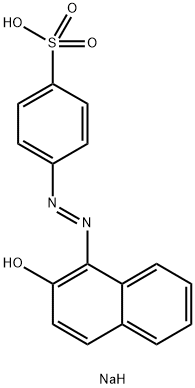
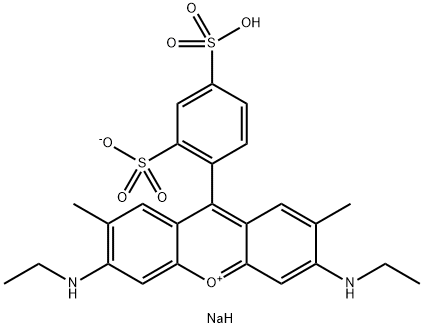
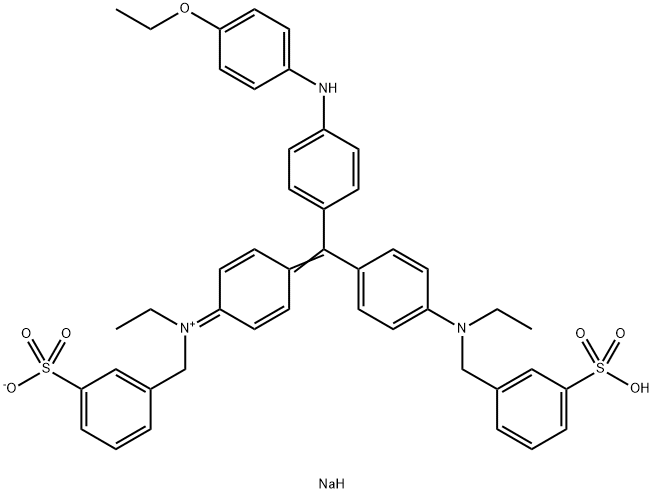
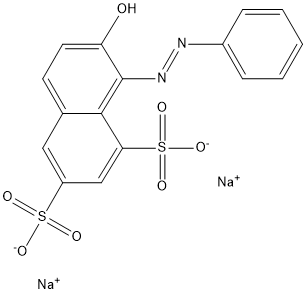


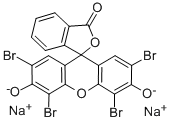
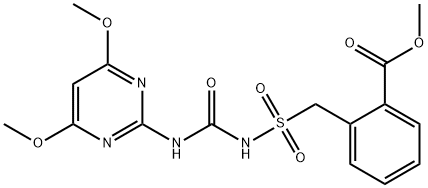
You may like
-
 Brilliant Blue G, Ultrapure CAS 6104-58-1View Details
Brilliant Blue G, Ultrapure CAS 6104-58-1View Details
6104-58-1 -
 Brilliant Blue G, Ultrapure CAS 6104-58-1View Details
Brilliant Blue G, Ultrapure CAS 6104-58-1View Details
6104-58-1 -
 Brilliant Blue G, Ultrapure CAS 6104-58-1View Details
Brilliant Blue G, Ultrapure CAS 6104-58-1View Details
6104-58-1 -
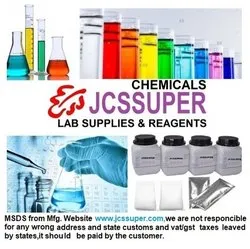 Coomassie Brilliant Blue g 250 For Electrophoresis 25 Gm.View Details
Coomassie Brilliant Blue g 250 For Electrophoresis 25 Gm.View Details
6104-58-1 -
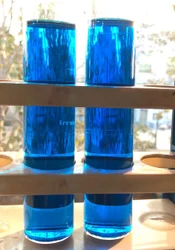 25 kg Brilliant Blue Food ColoursView Details
25 kg Brilliant Blue Food ColoursView Details
6104-58-1 -
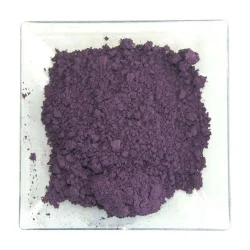 Brilliant Blue Cosmetics PowderView Details
Brilliant Blue Cosmetics PowderView Details
6104-58-1 -
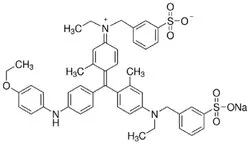 Coomassie Brilliant Blue G 250 (CAS Number: 6104-58-1), Packaging Size: 1 kg / 5 kg / 10 kg / 25 kgView Details
Coomassie Brilliant Blue G 250 (CAS Number: 6104-58-1), Packaging Size: 1 kg / 5 kg / 10 kg / 25 kgView Details
6104-58-1 -
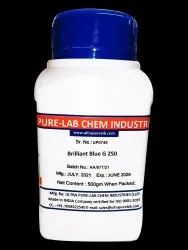 Brilliant Blue G 250, PowderView Details
Brilliant Blue G 250, PowderView Details
6104-58-1
